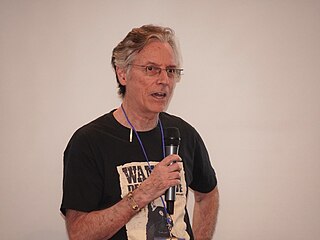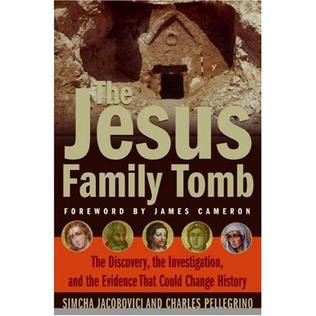Related Research Articles

The resurrection of Jesus is the Christian belief that God raised Jesus from the dead on the third day after his crucifixion, starting – or restoring – his exalted life as Christ and Lord. According to the New Testament writing, Jesus was firstborn from the dead, ushering in the Kingdom of God. He appeared to his disciples, calling the apostles to the Great Commission of forgiving sin and baptizing repenters, and ascended to Heaven.

John the Apostle, also known as Saint John the Beloved and, in Eastern Orthodox Christianity, Saint John the Theologian, was one of the Twelve Apostles of Jesus according to the New Testament. Generally listed as the youngest apostle, he was the son of Zebedee and Salome. His brother James was another of the Twelve Apostles. The Church Fathers identify him as John the Evangelist, John of Patmos, John the Elder, and the Beloved Disciple, and testify that he outlived the remaining apostles and was the only one to die of natural causes, although modern scholars are divided on the veracity of these claims.

The James Ossuary is a 1st-century limestone box that was used for containing the bones of the dead. An Aramaic inscription meaning "Jacob (James), son of Joseph, brother of Yeshua" is cut into one side of the box. The ossuary attracted scholarly attention due to its apparent association with the Christian holy family.

The Greek Acts of Philip is an episodic gnostic apocryphal book of acts from the mid-to-late fourth century, originally in fifteen separate acta, that gives an accounting of the miraculous acts performed by the Apostle Philip, with overtones of the heroic romance.

Johannine literature is the collection of New Testament works that are traditionally attributed to John the Apostle, John the Evangelist, or to the Johannine community. They are usually dated to the period c. AD 60–110, with a minority of scholars, including Anglican bishop John Robinson, offering the earliest of these datings.

Charles R. Pellegrino is an American writer, the author of several books related to science and archaeology, including Return to Sodom and Gomorrah, Ghosts of the Titanic, Unearthing Atlantis, and Ghosts of Vesuvius. Pellegrino falsely claimed to have earned a PhD, and errors in his book The Last Train from Hiroshima (2010) prompted its publisher to withdraw it within a few months of publication.
The Jesus bloodline refers to the proposition that a lineal sequence of the historical Jesus has persisted, possibly to the present time. The claims frequently describe Jesus as having married, often to Mary Magdalene, and as having descendants living in Europe, especially France but also the UK. Differing and contradictory Jesus progeny scenarios, as well as more limited claims that Jesus married and had children, have been proposed in numerous modern books. Some such claims have suggested that Jesus survived the crucifixion and went to another location such as France, India or Japan.

Simcha Jacobovici is a Canadian-Israeli journalist, documentary filmmaker and New York Times best-selling author.

The Talpiot Tomb is a rock-cut tomb discovered in 1980 in the East Talpiot neighborhood, five kilometers south of the Old City in East Jerusalem. It contained ten ossuaries, six inscribed with epigraphs, including one interpreted as "Yeshua bar Yehosef", though the inscription is partially illegible, and its translation and interpretation is widely disputed. The tomb also yielded various human remains and several carvings.

The Lost Tomb of Jesus is a pseudoarchaeological docudrama co-produced and first broadcast on the Discovery Channel and Vision TV in Canada on March 4, 2007, covering the discovery of the Talpiot Tomb. It was directed by Canadian documentary and film maker Simcha Jacobovici and produced by Felix Golubev and Ric Esther Bienstock, while James Cameron served as executive producer. The film was released in conjunction with a book about the same subject, The Jesus Family Tomb, issued in late February 2007 and co-authored by Jacobovici and Charles R. Pellegrino. The documentary and the book's claims have been rejected by the overwhelming majority of leading experts within the archaeological and theological fields, as well as among linguistic and biblical scholars.

The Jesus Family Tomb: The Discovery, the Investigation, and the Evidence That Could Change History (ISBN 0061192023) is a controversial book by Simcha Jacobovici and Charles R. Pellegrino published in February 2007. It tells the story of the discovery of the Talpiot Tomb on Friday March 28, 1980 and makes an argument that it is the tomb of Jesus Christ and his family.

The Jesus Dynasty is a 2006 book written by James Tabor in which he develops the hypothesis that the original Jesus movement was a dynastic one, with the intention of overthrowing the rule of Herod Antipas; that Jesus of Nazareth was a royal messiah, while his cousin John the Baptist planned to be a priestly messiah.

David Koresh was an American cult leader who played a central role in the Waco siege of 1993. As the head of the Branch Davidians, a religious sect and offshoot of the Seventh-day Adventists, Koresh claimed to be its final prophet. His apocalyptic Biblical teachings, including interpretations of the Book of Revelation and the Seven Seals, attracted various followers.

Since the 1970s, scholars have sought to place Paul the Apostle within his historical context in Second Temple Judaism. Paul's relationship to Judaism involves topics including the status of Israel's covenant with God and the role of works as a means to either gain or keep the covenant.
Larry Weir Hurtado, was an American New Testament scholar, historian of early Christianity, and Emeritus Professor of New Testament Language, Literature, and Theology at the University of Edinburgh (1996–2011). He was the head of the School of Divinity from 2007 to 2010, and was until August 2011 Director of the Centre for the Study of Christian Origins at the University of Edinburgh.

The term Johannine community refers to an ancient Christian community which placed great emphasis on the teachings of Jesus and his apostle John.

In Christian theology and ecclesiology, the apostles, particularly the Twelve Apostles, were the primary disciples of Jesus according to the New Testament. During the life and ministry of Jesus in the 1st century AD, the apostles were his closest followers and became the primary teachers of the gospel message of Jesus. There is also an Eastern Christian tradition derived from the Gospel of Luke that there were seventy apostles during the time of Jesus' ministry.
Joseph E. Zias, most commonly cited as Joe Zias, was the Curator of Archaeology and Anthropology for the Israel Antiquities Authority from 1972 until his retirement in 1997, with responsibility for items such as the Dead Sea Scrolls, pre-historic human skeletal remains, and artifacts from archaeological sites such as Jericho, Megiddo, and Gezer. He has appeared often in film and television documentaries regarding such artifacts and the subject of the Historical Jesus, including The Mysterious Man of the Shroud for CBS, Who Killed Jesus on BBC in 1997 and Son of God on BBC in 2001, and is a frequent lecturer.
The Resurrection Tomb Mystery is a television documentary program produced and first broadcast on the Discovery Channel and Vision TV in Canada on Thursday, April 12 at 10pm e/p during Easter week 2012. The documentary was executive produced by Simcha Jacobovici, Ric Esther Bienstock and Felix Golubev of Associated Producers, Ltd.

The Lost Gospel: Decoding the Ancient Text that Reveals Jesus' Marriage to Mary the Magdalene is a book published by investigative journalist Simcha Jacobovici and Religious Studies historian Barrie Wilson in 2014. It contends that the 6th century manuscript -- by Pseudo-Zacharias Rhetor now British Library Add MS 17202 -- commonly referred to as "Joseph and Aseneth" is really a disguised history. The book's assertions are not supported by mainstream Biblical scholarship.
References
- ↑ "Introducing the Transparent English Bible". Transparent English Bible. Original Bible Project. 2018.
- ↑ Gladwell, Malcolm (March 31, 2014). "Sacred and Profane: How not to negotiate with believers". The New Yorker . Retrieved 2 May 2014.
- ↑ "Waco Investigation Day 5 Part 3 | C-SPAN.org". www.c-span.org. Retrieved 2024-01-26.
- ↑ Wightman Fox, Richard (April 13, 2006). "Jesus Nation". Slate. The Washington Post. p. 1. Retrieved 10 October 2010.
- ↑ Tolson, Jay (April 9, 2006). "The Kingdom of Christ". U.S. News & World Report. Archived from the original on 12 November 2009. Retrieved October 10, 2010.
- ↑ Jan Lietaert Peerbolte, Bert (2007-06-23). "The Jesus Dynasty". Society of Biblical Literature. p. 1. Retrieved 10 October 2010.
- ↑ Jeffrey Butz, The Secret Legacy of Jesus, ISBN 978-1-59477-307-5, p. 24.
- ↑ Hasson, Nir. "'Naked Archaeologist' Finds Signs Jerusalem Cave Was Used to Bury Jesus' Disciples". Haaretz. Retrieved 23 May 2022.
- ↑ Boyle, Alan (29 February 2012). "Doubts about 'the Jesus Discovery'". NBC News. Retrieved 23 May 2022.
- ↑ "Tabor & Nichols Israel Tour March 2021 – Walking the Ancient Paths". Archived from the original on 2021-01-19. Retrieved 2020-12-25.
- ↑ "The Jewish Roman World of Jesus". The Jewish Roman World of Jesus.